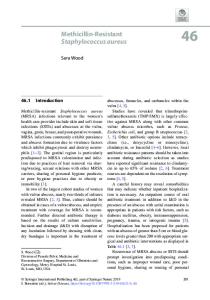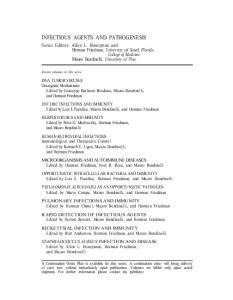Development of local vancomycin delivery system from fibrin gel to prevent Staphylococcus aureus biofilms graft infectio
- PDF / 1,587,543 Bytes
- 9 Pages / 595.276 x 790.866 pts Page_size
- 97 Downloads / 259 Views
Ó Indian Academy of Sciences (0123456789().,-volV) (0123456789().,-volV)
Development of local vancomycin delivery system from fibrin gel to prevent Staphylococcus aureus biofilms graft infection VU NGUYEN DOAN1,2,3* , TUNG THANH TRUONG2,3 and HA LE BAO TRAN1,2,3 1
Laboratory of Tissue Engineering and Biomedical Materials, University of Science, Vietnam National University, Ho Chi Minh City 700000, Vietnam
2
Department of Physiology and Animal Biotechnology, Faculty of Biology and Biotechnology, University of Science, Vietnam National University, Ho Chi Minh City 700000, Vietnam 3
Vietnam National University, Ho Chi Minh City 700000, Vietnam *Corresponding author (Email, [email protected]) MS received 28 March 2020; accepted 11 September 2020
Prosthetic vascular graft infection is one of the most severe vascular surgery complications. Fibrin gel (FG) has many useful characteristics as biocompatibility, biodegradation, adhesion, and haemostasis to develop the local antibiotic delivery system. In this study, human plasma was collected from peripheral blood that was used to create fibrin gel by supplement ion Ca2?. Antibiotic-containing fibrin gel was then evaluated in some characteristics such as surface structure, biodegradation, antibiotic delivery, cytotoxicity, and bacterial biofilm prevention in vitro and in vivo. The results showed that fibrin gel was excellent material for the extended delivery of antibiotics. Most importantly, antibiotic-containing fibrin gel was not toxic for human fibroblast cells in vitro and inhibited bacterial biofilm growth in vitro and in vivo. This research is the first step in developing an antibiotic delivery system for effective graft infection treatments. Keywords.
Antibiotic; biofilm; drug delivery system; fibrin gel; graft infection
1. Introduction Prosthetic vascular graft infection (PVGI) can be disastrous and cause an increase in morbidness and mortality risk. The yearly cost burden related to PVGI is $640 million in the United States (Kilic et al. 2016). Morbidity of PVGI ranges from 1–5% of patients, varies according to the location of anatomical implantation, the using biomaterials, and the patient’s comorbidities. The mortality rate is about 10–25% within 30 days after the detection and almost 50% after 1 year. The risk of amputation is about 4–14% (Revest et al. 2016). During surgery, the patients are often provided antibiotics, especially in orthopedic surgery, because the surgical area is large and graft materials are implanted in the body. Besides, when the infection occurs in transplant location where is low blood density, they must be treated with high doses of antibiotics http://www.ias.ac.in/jbiosci
and for a long time. Thus, it is toxic to the patient’s body and causes antibiotic-resistant bacteria (Archer et al. 2011; Pye et al. 2009). Biofilm develops on the surface of graft materials plays an important role in the difficulties of treating PVGI. Biofilm is formed by bacterial cells adhered into an extracellular matrix that prevents antibiotic infiltration and protects
Data Loading...











